To Mow or not to Mow
There is a grassy battle going on out there and it's getting damned serious. It is not about laying turf versus sowing seed or even using chamomile versus clover or possibly meadow seed versus moss, oh no, it's a much bigger issue than any of those it's:
Real versus Fake.
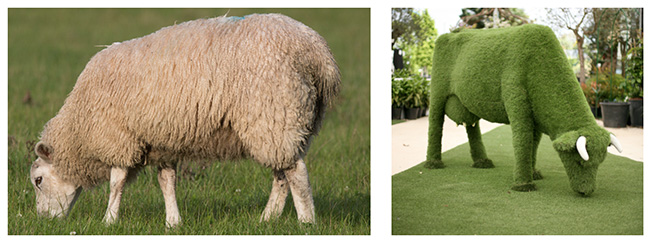

Okay it is unlikely that Lords cricket ground will dig up its hallowed turf and bang down plastic any time soon...
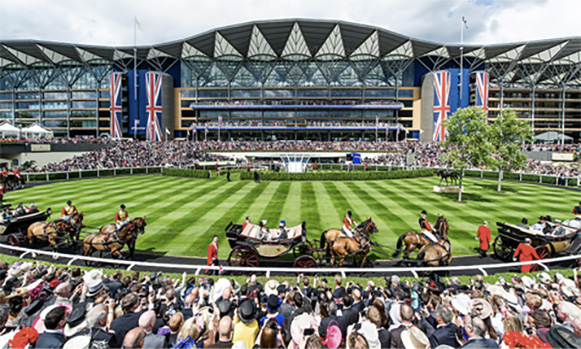
...or that trainers will welcome the Queen into a paddock of synthetic grass at Ascot. Indeed, when one of the chiefs at The Wimbledon Lawn Tennis Association was asked by an American if the grass they played on was plastic he blanched. When the guy added that it looked so good it could be fake it was too much for him, he called for a pair of umpires who politely helped the American leave the grounds.
.jpg)
However, we cannot ignore the fact that artificial grass is becoming an ever increasingly viable alternative.

F1 Grand Prix tracks use huge amounts of it for the run off areas replacing gravel. For example, 7000sqm of artificial grass has been installed at the Bahrain International Circuit which arguably makes the landing a little more convivial after losing your steering wheel if not your nerve.
It is open to conjecture as to what the origins of the word ‘lawn’ are exactly but the popular theory is that it comes from the Welsh Celts who, around 800 BC, used to refer to their agricultural enclosures as ‘launes’. This would have been the settlements used for communal grazing of livestock in their pastoral fields.
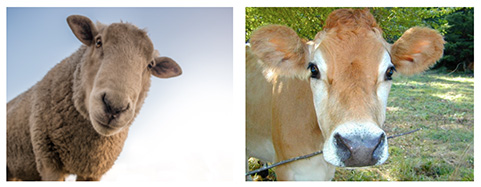
At that time, it didn’t occur to anybody, especially in Wales, to use these grassy areas for anything ornamental or soothing to the spirit. That sophistication came later with the monasteries.
Lawns came closer to how we see them today when they became popular with the aristocracy in northern Europe during the middle ages and onwards. It was the damp climate of the north that made lawns possible to grow and manage. They were not a part of gardens in other cultures or regions of the world until contemporary influence filtered through.
When I was a young garden designer working in London with a Robin on my shoulder and a book of poetry in my hand the use of 'pretend' grass didn't really extend much beyond a flimsy material favoured by barrow boys selling Fruit & Veg or possibly being incorporated into a street market display stand.
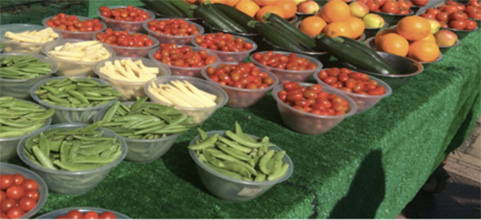
It was limp and had the sheen of a cheapness. It was, in other words, totally dismissed as a non-runner by any serious garden designer or architect as well as most garden centres who were trying to raise the standard of their presentation platforms.
Then one day I made a roof garden for a bloc of flats. The developer wanted to use synthetic grass to minimise weight problems. He wasn't interested in strengthening the structure of the building and I agreed to give it a go. The result was rather like this picture below but without the snorkels and I realised that under certain circumstances artificial grass had its place and stopped being snobby about it.
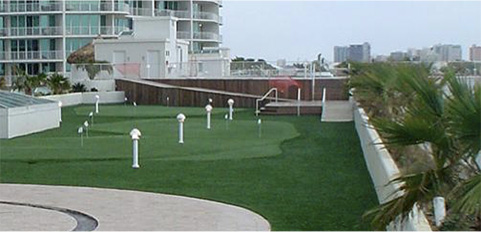
Pros and Cons
People with young children who have small gardens have discovered that plastic, artificial, synthetic turf, call it what you will, is a heck of a lot easier to maintain than a real lawn. You just hose it down or hoover it at the end of the day and bingo it looks the business again. Little feet don’t get muddy, no insects to bite them, no 'burnt' knees no weeds or bald patches, no mowing, clipping or edging, no drying out in summer, no dying from frost in winter and all the time its looking like a perfect lawn.
And there lies the heart of the debate. What about the priceless scent on newly mown grass? What about the appearance of daisies and daisy chains? What about blackbirds pulling a worm from between the blades? What about the mulch made from clippings? And if your garden is a bit bigger, what about that beautiful machine that cuts the swathe for you? The confident chug of a petrol driven machine, the whir of electric blades or the clatter of a push mower – music to a gardener’s ears.
